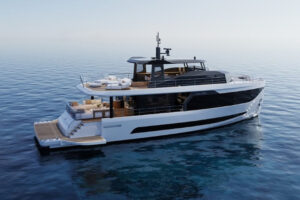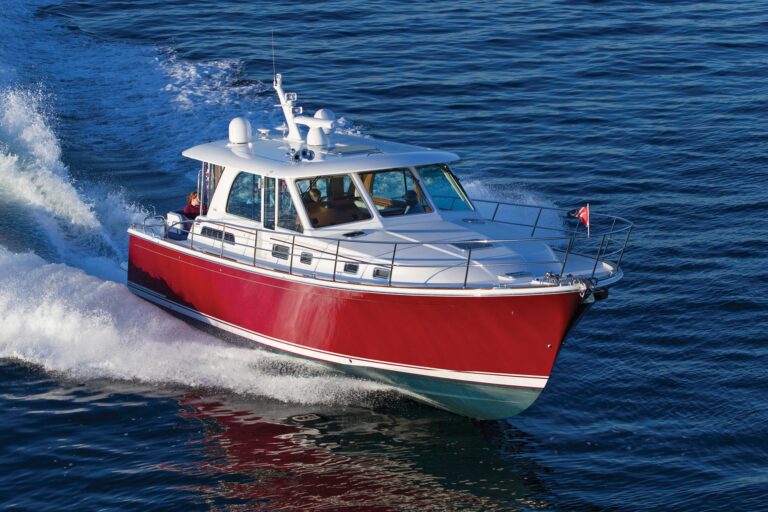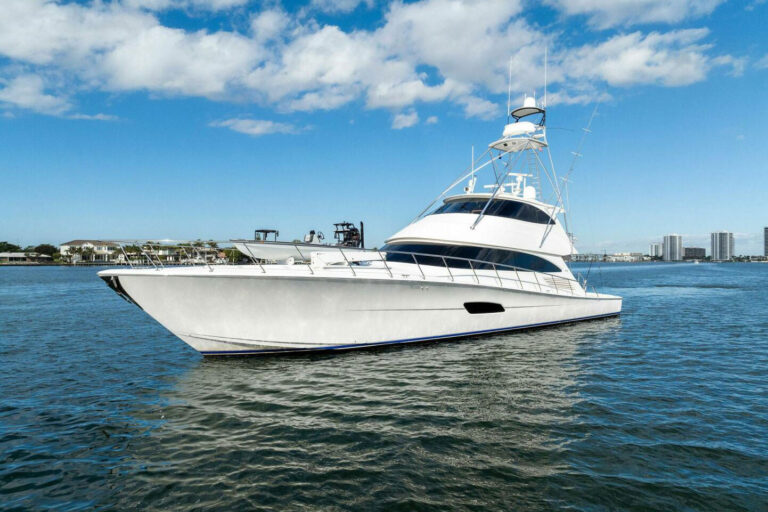Of the several ways to bring music aboard your boat, beyond physically carrying your CD collection, none offers the ease of today’s Macintosh iTunes systems.
A CD is an optically encoded means for storing digital bits and bytes, so it makes sense to store your CDs on a laptop computer-if you have the right equipment.
Each CD requires about 100 megabytes of storage per minute of playing time, so one 60-minute CD will fill a 6-gig drive. A 30-gig laptop is able to store only about five CDs-and nothing else-unless you compress the data.
The MPEG Audio Layer 3 (MP3) data compression system solves this problem, letting you squeeze a minute of music into a single megabyte of hard-drive storage. About 74 hours of music, the equivalent of 80 to 100 CDs, will fit on a 5-gig hard drive.
But wait a minute. Transferring 100 CDs would take about 120 hours. To shorten this time, use the computer’s CD drive. It can run at three to four times the normal speed required to play music, reducing the loading time for 100 CDs to 30 hours.
That’s where Macintosh comes in. The iTunes program, which is standard in the iBook (from $1,199) and G4 PowerBook (from $2,299) and other OS X-equipped Macs, asks only that you pop a new CD into the drive every time it spits out a completed one-every 15 to 20 minutes. It automatically checks the free CDDB database on the Internet and downloads information about the CD. Your music is indexed by artist, album and song. You can access information about each track, its playing time and the playing time for the entire CD.
When you set up for the CD transfer, decide how “hi the “fi should be. If you’re satisfied with FM broadcast-quality sound, set iTunes to sample the music at the 128 kbps rate. This rate consumes about one megabyte of space per minute of music. Sampling at 192 kbps results in higher fidelity, but consumes about 1.5 megs per minute.
Aboard the boat, connect a cable from the stereo audio output of the computer to your entertainment system, then press Play. The program lets you play whatever you want in whatever order suits your mood.
To make the CD library even more easily portable, check out the Palm-size iPod stereo system ($399 base price), which stores 80 to 100 of the CDs in the computer through iTunes.
To load the iPod, plug it into the computer’s FireWire port, select the CDs for transfer, then press the key. Data transfers at about 400 megabits per second, at which speed you can refill the iPod in about 10 minutes. You would normally listen to the iPod via headphones, but you may use it as a program source for the boat’s stereo.
The flexibility, speed and simplicity of the iTunes/iPod combination are difficult to match, but programs are available for users of Windows computers. They accomplish what iTunes does, but not nearly as quickly or simply.
Mac’s iTunes supports the many types of MP3 devices, but the program is not available as a standalone, only as part of the Mac OS X system.
Contact: Apple Computer, www.apple.com.








